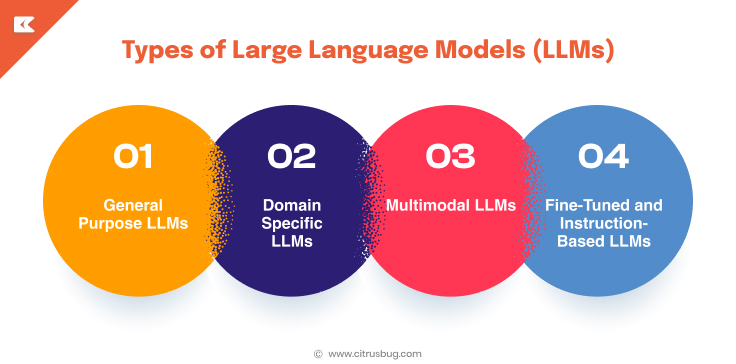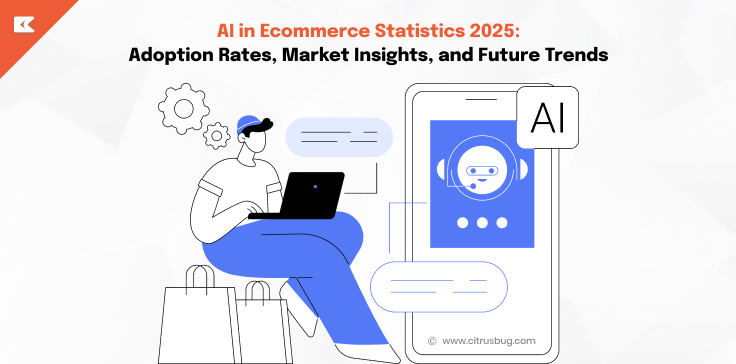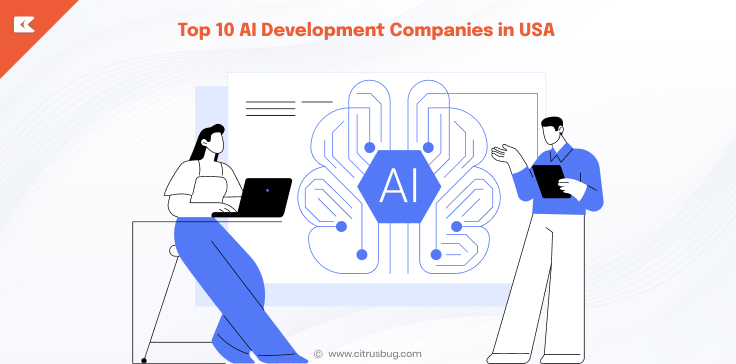Top LLM Use Cases Transforming Businesses in 2025
- November 4, 2025
-
1302 Views
- by Ishan Vyas
Table of Contents
- What Are Large Language Models (LLMs)?
- What Makes Large Language Models (LLMs) So Transformative?
- Types of Large Language Models (LLMs)
- Top LLM Use Cases Transforming Businesses in 2025
- Industry-Wise LLM Use Cases
- Key Benefits of Implementing LLMs in Your Organization
- How to Build and Deploy Custom LLMs for Your Business
- The Future of LLMs: From Text to Autonomous Intelligence
- Conclusion: LLMs as the Core Engine of Digital Transformation
Large Language Models (LLMs) are no longer considered research experiments. They are now pushing the way companies automate processes, improve decision-making and provide smart user experiences. From customer support to software development, LLMs are quietly becoming the brain behind enterprise digital transformation.
Gartner predicts that by 2026, more than 30% of API demand will be generated by AI and tools run by LLMs. This indicates the rate at which organizations are shifting towards implementing the use of LLMs in their products and processes.
But how exactly are these models being applied in industries? And which LLM use cases deliver measurable business impact in 2025?
Let’s explore the most effective and impactful aspects of how the enterprise landscape is changing in the hands of LLMs.
What Are Large Language Models (LLMs)?
Large Language Models (LLMs) are advanced AI systems trained on massive datasets of text to understand and generate human-like language. They process information, respond to questions, generalize information and engage in reasoning.
LLMs are transformer-based architectures, which identify complex data patterns, which is why they are flexible in use across various industries, including healthcare, finance, and education. They are used in conjunction with custom NLP solutions in many organizations to increase accuracy and performance.
What Makes Large Language Models (LLMs) So Transformative?
LLMs are transforming the way businesses are conducted by transforming large amounts of unstructured data into actionable insights. They are fundamental to current businesses because of their contextual awareness, the ability to make decisions automatically and to provide natural responses.
They assist in automating and simplifying the process of repetitive work, accelerating the content creation, and enhancing the customer experience by personalizing and automating it. Organizations that integrate LLMs into their operations often see measurable gains in efficiency and scalability, which supports long-term digital transformation.
These models are increasingly becoming specialized as they develop. Businesses can also specialize the LLM to perform fine-tuning to review a legal document, analyze medical data, or make financial predictions. Such flexibility will enable them to match AI performance to the actual business requirements and the industry regulations.
Types of Large Language Models (LLMs)
Not all LLMs are built the same. Each type of model has a different purpose for solving business problems, depending on its training data, structure and purpose. Understanding such types assists organizations in selecting the appropriate basis for their AI programs.
1. General-Purpose LLMs
GPT-4, Claude, and Gemini models are general-purpose language understanding and reasoning models. They can write, summarize, translate and discuss in disciplines. Businesses use them for automation, customer engagement, and the creation of content.
2. Domain-Specific LLMs
These models are optimized for a specific industry or work. As an example, an LLM trained on medical data will provide correct diagnostics and documentation. Similarly, a legal or financial model can understand compliance terms and domain-specific language. Custom LLM development is a common practice by companies to develop such specialized solutions.
3. Multimodal LLMs
Multimodal LLMs can process text, images, audio, or video together. They can be used in such applications as a virtual assistant, document processing, smart content systems. Such a mixture of modalities allows more contextual interactions.
4. Fine-Tuned and Instruction-Based LLMs
Fine-tuning enables a business to train an existing LLM to match a particular dataset or objective. Instruction-based models, on the other hand, take user-specific prompts or instructions to produce more accurate and relevant results. These approaches make LLMs flexible and cost-effective to deploy in enterprise settings.
Top LLM Use Cases Transforming Businesses in 2025
Enterprise AI strategies are turning out to be based on LLMs. In 2025, their applications extend far beyond chat interfaces, powering end-to-end automation, smarter analytics, and decision support across industries. These are some of the most effective LLM use cases that are transforming businesses today.
Intelligent Customer Support
LLMs are at the core of next-generation AI chatbot development. They enable virtual assistants that understand customer intent, provide instant responses, and learn from every interaction. In comparison to rule-based bots, systems powered by LLM are able to support complex queries, which reduces false satisfaction and support costs.
Automated Content Creation
Whether it is marketing copy, product descriptions and reports, LLMs can assist in automating routine writing processes but remain completely consistent and toned. They enable content teams to produce SEO-friendly content and creative ideas more quickly, and to spend time planning.
Knowledge Management and Document Summarization
LLMs can read, comprehend and summarize extensive amounts of text accurately. They assist teams to access insights of research papers, manuals and legal documents within seconds. This is among the most rapidly expanding business uses of LLMs because of its influence on productivity.
Code Generation and Software Development
Developers now rely on LLMs to write, debug, and optimize code. These models can suggest improvements or explain snippets in plain language, making them powerful tools for engineering teams. Many companies integrate LLMs into their AI software development workflows to accelerate delivery cycles.
Data Analysis and Decision Support
LLMs are capable of deriving meaning out of both structured and unstructured data, summarizing, discovering insights, and making predictions. By combining with business intelligence tools, they enhance the pace and data-based decision-making.
Personalized Marketing and Recommendations
In e-commerce and digital media, LLMs analyze user preferences and behavior to create personalized recommendations or targeted campaigns. Their flexibility in adapting to the tone and style of the audience enhances the rate of engagement.
Legal and Compliance Automation
Legal teams utilize LLMs to form contracts, review and examine case law and spot compliance risks. When combined with the appropriate AI algorithm and fine-tuning, these models can be accurate and can reduce the number of manual inputs in the heavily regulated spheres.
Industry-Wise LLM Use Cases
Every industry is finding unique ways to apply large language models, from improving patient care to automating financial analysis. These domain-specific applications show how adaptable LLMs have become across verticals.
1. Healthcare
The LLMs support doctors and researchers with summarizing patient history, creating clinical notes, and diagnoses. They also assist patients with symptom checkers and health assistants. Hospitals are now integrating LLMs with Generative AI development services to develop HIPAA-compliant solutions to simplify the data workflow and improve care delivery.
2. Finance
In finance, LLMs automate document processing, fraud detection, and compliance reporting. They are able to study market trends and market attitudes to enable investment decisions. Both retail and institutional customers benefit by having their errors minimized and their data analyzed faster with fine-tuned financial LLMs.
3. Legal
Law firms use LLMs to draft contracts, identify case precedents, and summarize lengthy legal documents. These models save time on research and enhance precision, assisting lawyers to concentrate on strategy rather than on documentation.
4. Education
LLMs personalize learning experiences by generating quizzes, grading essays, and explaining complex topics in simpler language. In eLearning platforms, educators employ AI-based assistants to develop dynamic material that is appropriate to the individual learning pace of students.
5. E-Commerce and Marketing
LLM powers product recommendation, automated customer service and produces promotional content that is in tune with the brand. Their customer intent understanding capabilities result in increased engagement and better conversion in eCommerce.
6. Manufacturing
In manufacturing, LLM is applied in predictive maintenance, workflow documentation, and knowledge management. They process maintenance records and production information to identify the initial signs of equipment malfunction to enable companies to prevent the cost of downtime.
7. Software Development
LLMs help write, test, and document the code and deliver software much faster. They are used by companies in conjunction with AI development services to create smarter developer tools and automate tests.
Key Benefits of Implementing LLMs in Your Organization
Implementing large language models does not simply mean upgrading technology, but rather a strategy that affects productivity, efficiency, and innovation. When implemented thoughtfully, LLMs bring measurable business value across multiple functions.
Increased Operational Efficiency
Repetitive and time-consuming activities like writing reports, summarizing documents, and writing emails are automated by LLMs. This lowers the amount of manual tasks, and the teams are able to concentrate on more valuable initiatives that are growth-oriented.
Smarter Decision-Making
By processing both structured and unstructured data, LLMs provide informational insights that may be applied to make more and faster decisions. They take raw data and transform it into understandable summaries and recommendations, and help leaders take action with confidence.
Enhanced Customer Experience
LLMs comprehend the context and tone, which allows making communication with customers more natural and personal. Combined with AI consulting services, they are capable of optimizing chatbots, recommendation systems, and helpdesk tools and enhance satisfaction and retention.
Cost Reduction and Scalability
Automating routine processes and knowledge tasks lowers operational costs. Since LLMs do not require more personnel to scale, they enable organizations to grow effectively and stay quality and responsive.
Competitive Advantage
Firms that invest in LLMs early acquire a vast competitive advantage in innovation. These models enable teams to discover new ideas, test more quickly and create smart solutions that make them stand out among the crowd.
How to Build and Deploy Custom LLMs for Your Business
Building a custom LLM starts with understanding your business needs and the data that powers them. This is done through planning, model selection, fine-tuning and deployment to guarantee performance and accuracy.
Step 1: Define the Problem and Use Case
Identify what you want your LLM to accomplish. It may involve automating the process of document review, analyzing customer reviews or developing industry-specific chat assistants. A well-defined goal will result in a more successful model.
Step 2: Collect and Prepare High-Quality Data
Data is the foundation of every LLM. Gather clean, domain-relevant datasets and structure them properly for model training. Remove duplicates, correct inconsistencies, and label data where required.
Step 3: Choose the Right Model Architecture
Choose a pre-trained model that suits your application. GPT, as well as LLaMA and Claude, can be customized. There are also a variety of open-source solutions that can provide more customization of data and privacy.
Step 4: Fine-Tune and Train the Model
Fine-tuning adapts the base model to your domain or specific business processes. It contributes to the increased accuracy and reliability. To simplify this process, most organizations work with teams familiar with custom LLM development.
Step 5: Evaluate, Test, and Deploy
Before deployment, evaluate your LLM’s output for accuracy, bias, and consistency. Use real-world test cases to refine responses. Once ready, integrate it into your workflows or applications with proper monitoring tools in place.
Step 6: Maintain and Continuously Improve
LLMs perform best when they evolve with new data. Regularly monitor performance, get feedback and retrain the model to ensure that it is on track with your objectives and user requirements.
The Future of LLMs: From Text to Autonomous Intelligence
Large Language Models are rapidly evolving beyond text generation into systems that can reason, act, and collaborate with other AI tools. The future step of innovation will be to integrate LLMs with vision, speech, and sensor-based systems to form multimodal, autonomous intelligence.
Future LLMs will be able to read pictures, comprehend videos, and analyze real-time information in a variety of sources. This development will guide industries to automate complex workflow processes like medical diagnostics, risk management, and predictive maintenance with minimal human engagement.
According to a report, more than 80% of enterprises will use generative AI APIs or deploy generative AI–enabled applications in production by 2026, compared to less than 5% in 2023. This indicates how quickly organizations are moving toward adopting intelligent, autonomous systems built on advanced LLM architectures.
We’re also seeing the rise of multimodal LLM development services, where businesses integrate text, voice, and image understanding into a single AI model. This shift will create smarter enterprise systems capable of decision-making, reasoning, and adaptive learning.
In the near future, LLMs will be at the centre of self-learning ecosystems. They will not only answer questions, but they will proactively think of what is needed, recommend, and work with humans as digital teammates. The line between AI assistance and autonomous intelligence is getting smaller every day.
Conclusion: LLMs as the Core Engine of Digital Transformation
Large Language Models are redefining how businesses think about automation, decision-making, and customer engagement. They are no longer experimental tools but essential drivers of innovation across every primary industry.
At Citrusbug, we build and deploy custom LLM solutions that help enterprises accelerate digital transformation. Our AI engineers specialize in fine-tuning, domain-specific model development, and seamless integration of AI systems into existing workflows. This ensures measurable business impact and long-term scalability.
Organizations that adopt LLMs today will lead tomorrow’s AI revolution. The future belongs to businesses that turn intelligent technology into a real competitive advantage.


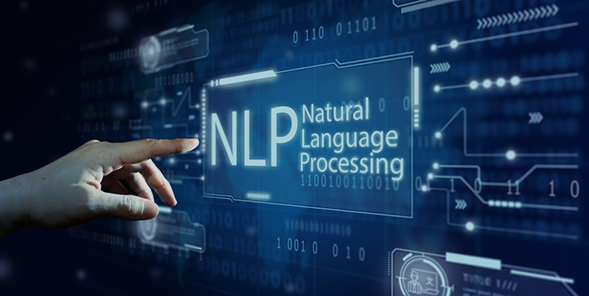
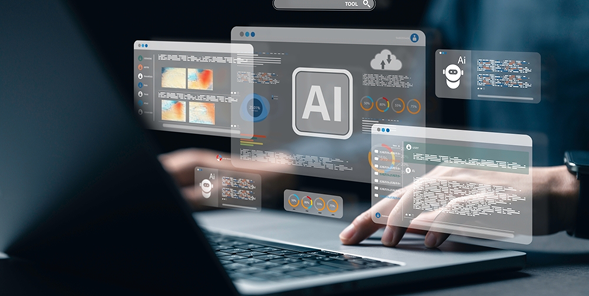

 SaaS Development
SaaS Development Web Application Development
Web Application Development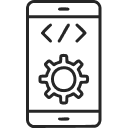 Mobile Application Development
Mobile Application Development Custom Software Development
Custom Software Development Cloud Development
Cloud Development DevOps Development
DevOps Development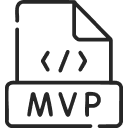 MVP Development
MVP Development Digital Product Development
Digital Product Development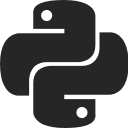 Hire Python Developers
Hire Python Developers Hire Django Developers
Hire Django Developers Hire ReactJS Developers
Hire ReactJS Developers Hire AngularJS Developers
Hire AngularJS Developers Hire VueJS Developers
Hire VueJS Developers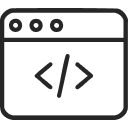 Hire Full Stack Developers
Hire Full Stack Developers Hire Back End Developers
Hire Back End Developers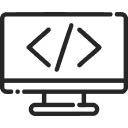 Hire Front End Developers
Hire Front End Developers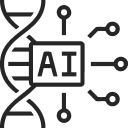 AI Healthcare Software Development & Consulting
AI Healthcare Software Development & Consulting Healthcare App Development
Healthcare App Development EHR Software Development
EHR Software Development Healthcare AI Chatbot Development
Healthcare AI Chatbot Development Telemedicine App Development Company
Telemedicine App Development Company Medical Billing Software Development
Medical Billing Software Development Fitness App Development
Fitness App Development RPM Software Development
RPM Software Development Medicine Delivery App Development
Medicine Delivery App Development Medical Device Software Development
Medical Device Software Development Patient Engagement Software Solutions
Patient Engagement Software Solutions Mental Health App Development
Mental Health App Development Healthcare IT Consulting
Healthcare IT Consulting Healthcare CRM Software Development
Healthcare CRM Software Development Healthcare IT Managed Services
Healthcare IT Managed Services Healthcare Software Testing services
Healthcare Software Testing services Medical Practice Management Software
Medical Practice Management Software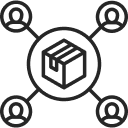 Outsourcing Healthcare IT Services
Outsourcing Healthcare IT Services IoT Solutions for Healthcare
IoT Solutions for Healthcare Medical Image Analysis Software Development Services
Medical Image Analysis Software Development Services Lending Software Development Services
Lending Software Development Services Payment Gateway Software Development
Payment Gateway Software Development Accounting Software Development
Accounting Software Development AI-Driven Banking App Development
AI-Driven Banking App Development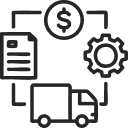 Supply Chain Management Software Development
Supply Chain Management Software Development Fleet Management Software Development
Fleet Management Software Development Warehouse Management Software Development
Warehouse Management Software Development LMS Development
LMS Development Education App Development
Education App Development Inventory Management Software Development
Inventory Management Software Development Property Management Software Development
Property Management Software Development Real Estate CRM Software Development
Real Estate CRM Software Development Real Estate Document Management Software
Real Estate Document Management Software Construction App Development
Construction App Development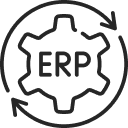 Construction ERP Software Development
Construction ERP Software Development







